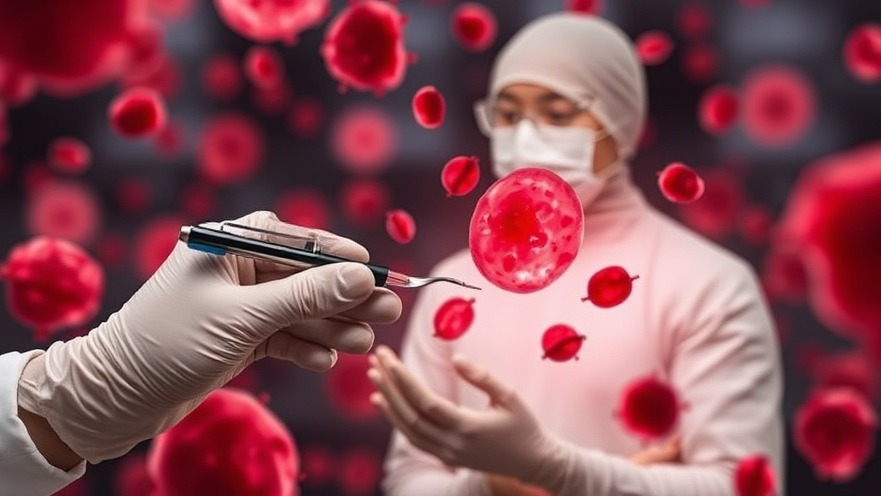
Innovative Hope for ALS Patients
Cell therapy is creating waves in the treatment landscape for amyotrophic lateral sclerosis (ALS), a progressive neurodegenerative disease that currently has no cure. Dr. Simrit Parmar from Texas A&M University has developed a promising new cell therapy utilizing umbilical cord blood-derived T regulatory (Treg) cells, which has shown remarkable potential in improving patient outcomes. With results from human trials demonstrating safety and effectiveness, this innovation may redefine ALS treatment protocols.
Rich Clinical Applications and Escaping Conventional Risks
Parmar's groundbreaking approach diverges from traditional therapies that often require patient-specific donor matches which can complicate logistics and accessibility. Instead, her therapy can be manufactured on a large scale from just one umbilical cord blood unit, generating multiple ready-to-use products that remain viable for up to three years. This presents a significant advancement, especially given the complexity and urgent need for effective treatments for ALS and aplastic anemia, among other conditions.
Key Components Distinct to Parmar's Approach
The cell therapy introduced by Parmar capitalizes on the unique properties of Treg cells derived from umbilical cords. These cells are inherently equipped to manage inflammation without inciting further harm, a common risk with adult-derived Tregs that can exacerbate existing conditions. The ability to deliver cell therapies effectively without matching donors enhances accessibility, a critical element in offering hope to patients suffering from devastating illnesses.
The Collaborative Push: U.S.-Saudi Alliance in Medical Progress
On May 22, 2025, a significant partnership was announced between Cellenkos, Parmar's biotech company, and a leading medical center in Riyadh, marking the first alliance for clinical trials between the U.S. and Saudi Arabia. This collaboration signals not just cross-border commitment to medical research, but also the shared urgency in addressing hard-to-treat diseases like ALS and aplastic anemia. By pooling resources, both entities aim to expedite the clinical trial process and broaden the scope of patient access to this innovative treatment.
Future Directions: Promising Clinical Findings
Initial findings have garnered attention in reputable medical journals like NEJM Evidence, with articles reporting that patients who received multiple infusions of the therapy exhibited improved functional capabilities over time. This evidence not only showcases the therapy's potential but also fosters hope in a community that has historically faced bleak prognoses. As these clinical trials progress, so does the outlook for ALS and its patients.
Questions for Practitioners: How Will This Impact Patient Care?
Concierge health practitioners should consider what these advancements mean for their practice. Will there be new protocols to follow? Should they prepare for changes in patient treatment plans? Understanding the implications of such innovative therapies encourages proactive engagement with patients who may benefit from cutting-edge treatments. Staying informed about these developments is essential in providing top-tier, evidence-based care.
Call to Engage with Emerging Medical Innovations
As cell therapy emerges as a viable option for challenging diseases, it is paramount for health practitioners to keep abreast of these developments. Implementing new knowledge into practices can significantly enhance the level of care provided to patients. Join conversations about ongoing trials, share insights within your network, and be part of the transformative wave in ALS treatment.
 Add Row
Add Row  Add
Add 






Write A Comment